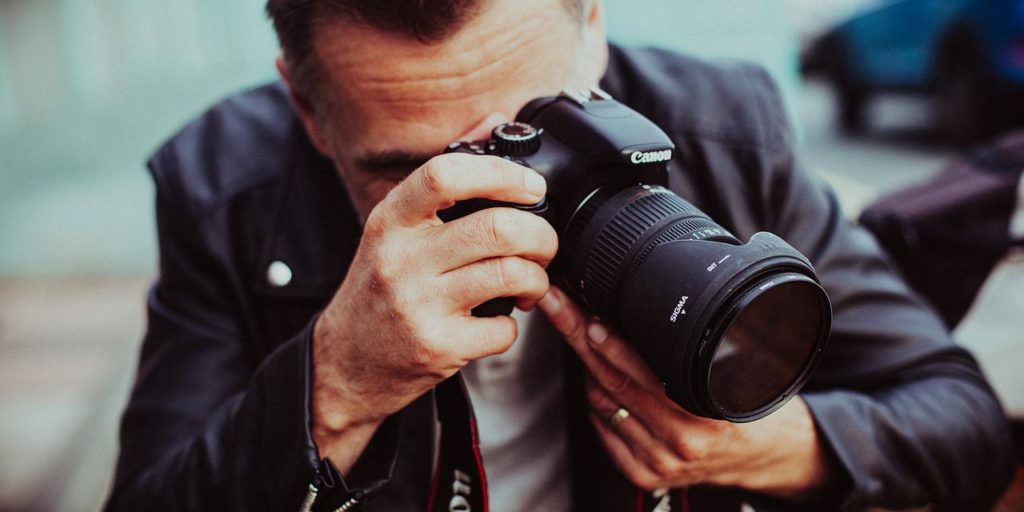- Swing and a miss for torpedo bat trademark application? - April 23, 2025
- Copyright lawsuit could create new licensing option for media industry - January 29, 2025
- Trademark law is not intended to stifle competition - November 14, 2024
By Tony Poland, LegalMatters Staff • Just because someone took your photograph doesn’t mean you have the right to use the image as you wish, says Toronto intellectual property lawyer John Simpson.
Simpson, principal of IP and new media law boutique Shift Law Professional Corporation, used the case of American model and actress Emily Ratajkowski – who recently settled a copyright infringement case with a photographer – as an example of how laws relating to photographs of people can be surprising.
Ratajkowski had posted a photo of herself taken by the photographer on her Instagram account. The photographer filed a lawsuit, claiming she had not obtained a license to use the image. It was reported the photographer was seeking $150,000 in damages along with any profits she earned from the image. The case was settled last month although terms were not disclosed.
‘It seems odd that you cannot use a photograph of yourself’
“To many, it seems odd that you cannot use a photograph of yourself,” says Simpson, who was not involved in the case but comments generally. “Why is that image not yours to do what you want with it?
“But copyright law says otherwise,” he tells LegalMattersCanada.ca.
According to media reports, Ratajkowski argued that under copyright law photographs do not qualify for protection if they lack artistic merit. In her motion to the court, she stated those protections only extend to someone who “actually formed the picture by putting the persons in position, and arranging the place where the people are to be.”
“Her lawyers argued that there was no sort of art to the image. There was no direction to it,” Simpson says. “The photographer didn’t stage it or do any of the sorts of things that a professional photographer might do.
‘The bar is very low for a work to be the subject of copyright’
“But the bar is very low for a work to be the subject of copyright and it is the same in Canada as it is in the U.S.,” he adds. “In Canada, all that is required is some level of skill and judgment,” Simpson says.
The copyright in a photograph that meets that low bar is owned by the photographer, not the subject of the photograph, he explains.
- Non-fungible tokens the next trademark challenge on the horizon
- Adidas loses battle of the stripes in trademark infringement lawsuit
- Willy Wonka ad shows effectiveness of social media IP policing policies
“For the subject of a photograph taken by another person to have the right to use it as he or she wishes, they would need to acquire copyright from the photographer or at least a license,” says Simpson.
He says the subject of the photograph has “no inherent rights in it except, potentially, privacy rights.”
Ratajkowski is a public figure
“If you were in your home and somebody took a picture through the window, then that would be the subject of a different area of the law. That’s not an issue here,” says Simpson. “Because Ratajkowski was out on the streets of New York and she is a public figure, the law would likely deem her to be someone who should expect to have people snapping photographs of her.
“In any case, privacy law does not give the subject proprietary rights to the photograph. All it does is prevent the photographer from posting the work if it invades someone’s privacy.”
The fact that Ratajkowski posted this image on Instagram herself would probably defeat any privacy claim against the photographer, he says.
Another argument that was available to Ratajkowski, Simpson says, was that her use of the image was fair use or “fair dealing” as it is called in Canada. What makes fair use an arguable defence is that Ratajkowski posted the photo with a caption: “Mood forever.”
Possible to argue the photo was used to critique it
“In these circumstances, it could be possible to argue she was not posting the photograph for any other purpose than commenting on it or reviewing it,” he says. “Much in the same way a reviewer can post a passage from a book so they can critique it. That is a recognized form of fair dealing.
“The challenge is proving she was posting the photograph to critique it. Most people who see it would only be interested in looking at the photograph as opposed to her critique of it.”
Simpson says the concept of “transformative use,” altering copyrighted material in a transformative way, might also be raised as a defence in this case. By adding a caption to the image “there’s an argument that she’s transforming the photograph into some new work,” he says.
However, Simpson doubts that a fair use or transformative use defence would succeed in this case.
“The photographer took the image because of the person who is featured in it and has a presumptive right to commercialize that photograph as the copyright owner,” he says. “By posting it on Instagram, Ratajkowski did what the photographer has the right to do. She’s not creating a new work. She’s reproducing someone else’s work. The fact that she is adding some words to it doesn’t transform it into a new work or make her use ‘fair.’”

